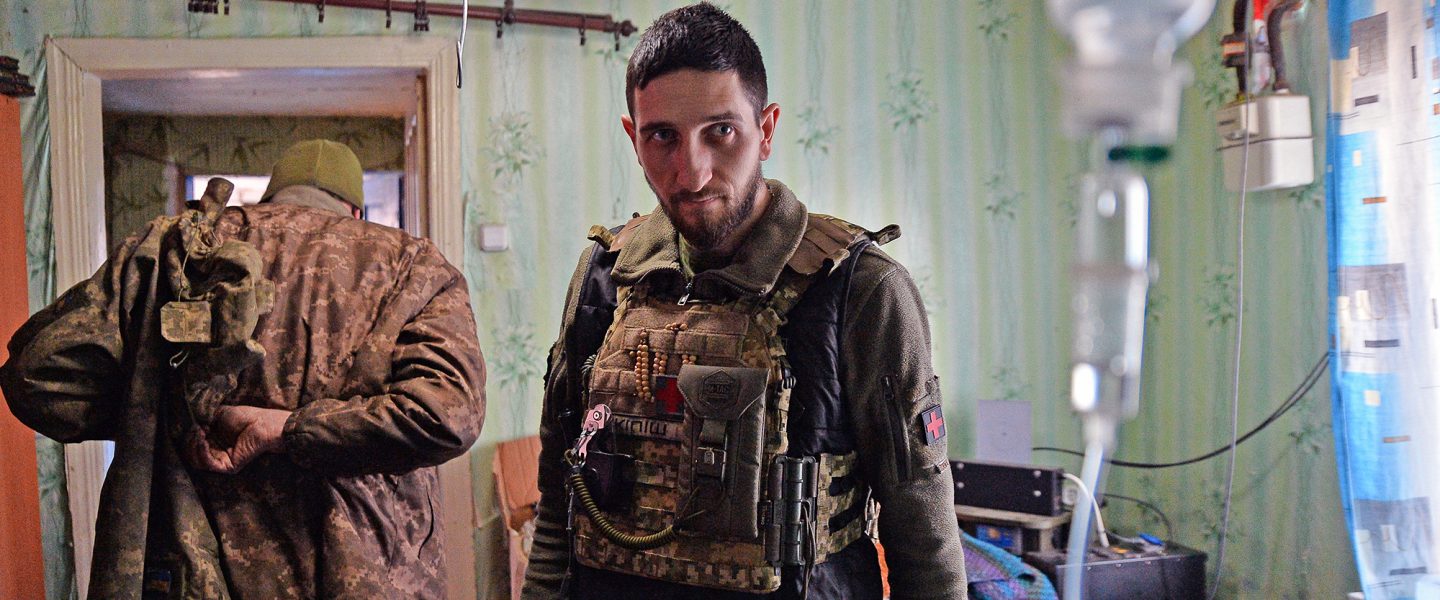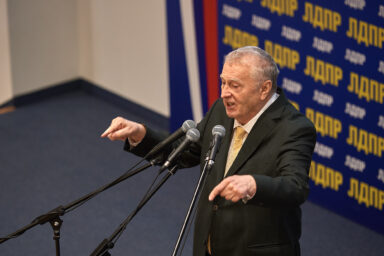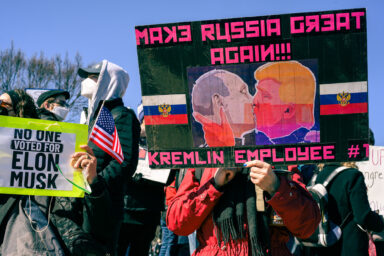In the past year thousands of Ukrainian soldiers have been injured in battles in eastern Ukraine. With no hospitals nearby, where do they go?
|
Listen To This Story
|
DONETSK OBLAST, Ukraine — In a small village near Siversk in eastern Ukraine there is a little house with no bathroom and no running water.
Several men have been living here for the last three months. Four of them — sometimes five — share a single bedroom. Two men sleep in a closet.
This house is a “stabilization point,” a makeshift triage unit close to the front line for injured Ukrainian soldiers who have been battling the Russian forces. An improvised emergency room, if you will.
The nearest military hospital is about a half-hour drive from here. The closest trauma center is 90 minutes away.
The men who live here are combat medics. They are trained to stop bleeding, relieve pain, alleviate breathing difficulties, and treat shrapnel wounds.
They are the medical first responders of the 10th Separate Mountain Assault Brigade.
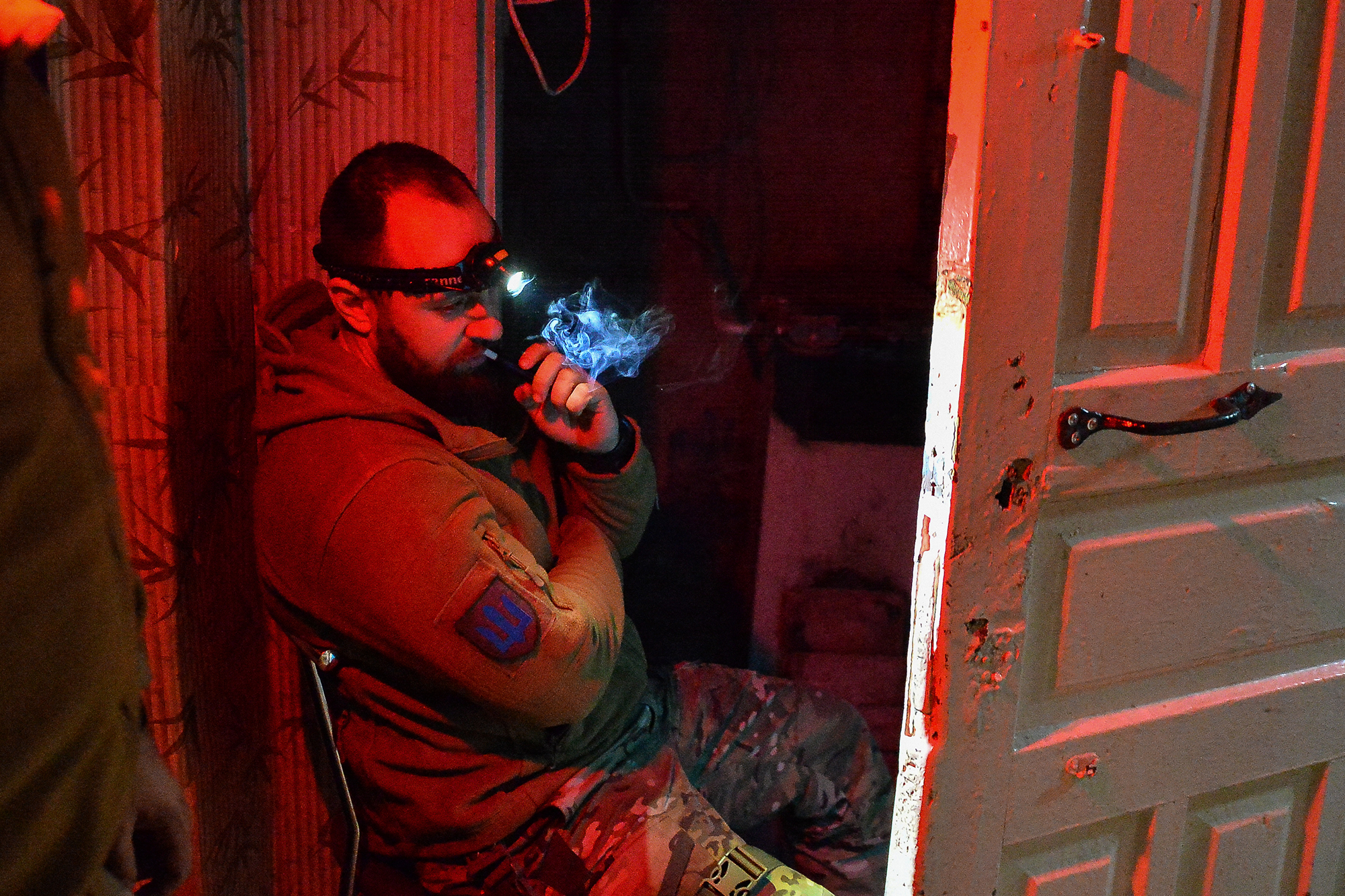
9:34 p.m. — Medic “Sweety” lounges at the front door of the small house, smoking an e-cigarette and listening to the sounds of artillery in the distance. There is a wood stove behind him and the house is warm, but outside it is below freezing.
Sweety is used to seeing injured soldiers at all hours, but tonight the house will be peaceful.
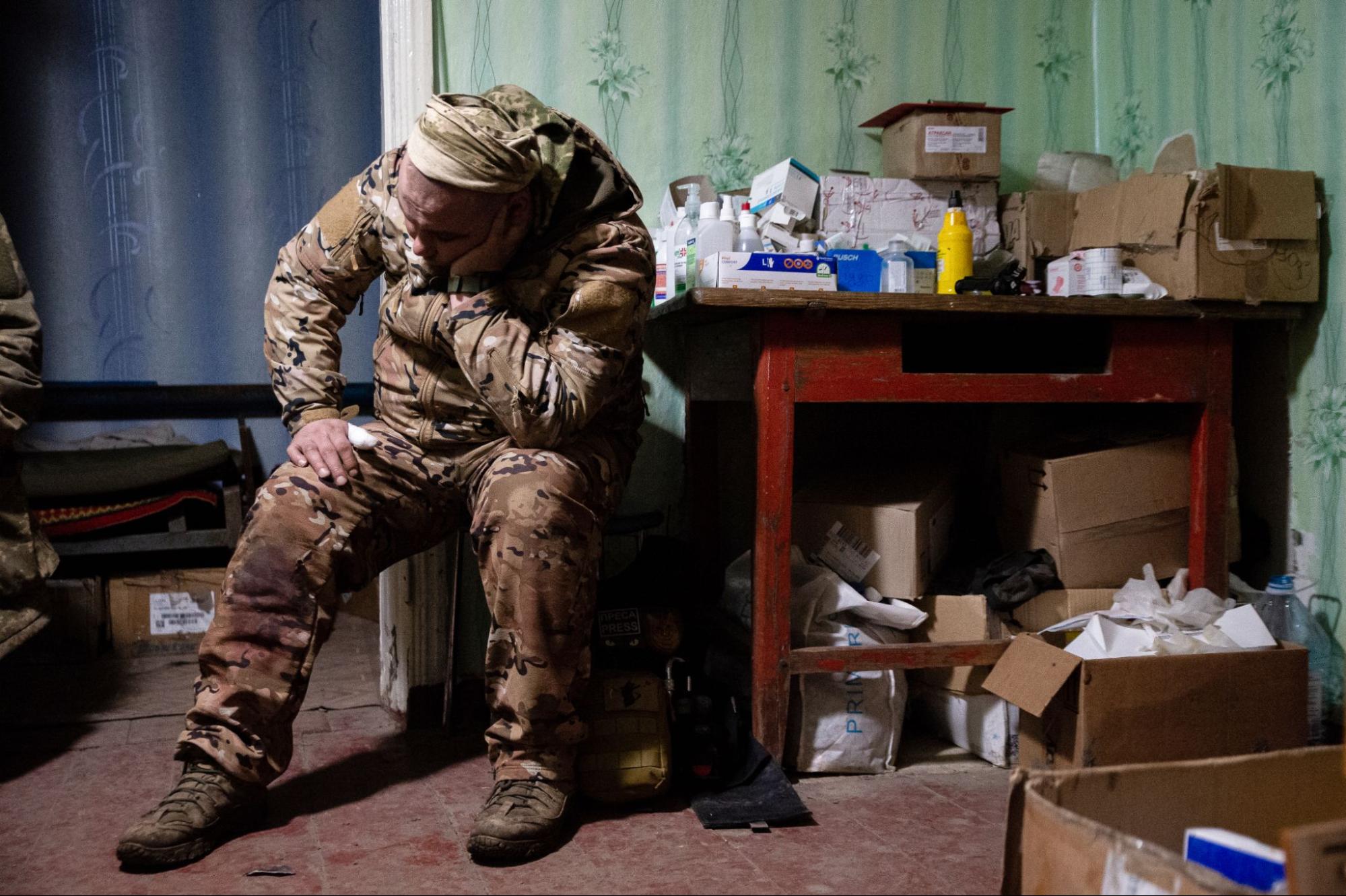
5:03 a.m. — Three injured soldiers arrive in an evacuation van. Two more soldiers, in another van, follow closely behind.
“Mechanic,” the tired soldier in this photo, was hit in his right leg by shrapnel last night from an MLRS Grad rocket, an extremely powerful truck-mounted rocket system designed in the Soviet Union in the 1960s. His buddy “Kush” (not pictured) has a concussion injury from a mortar attack.
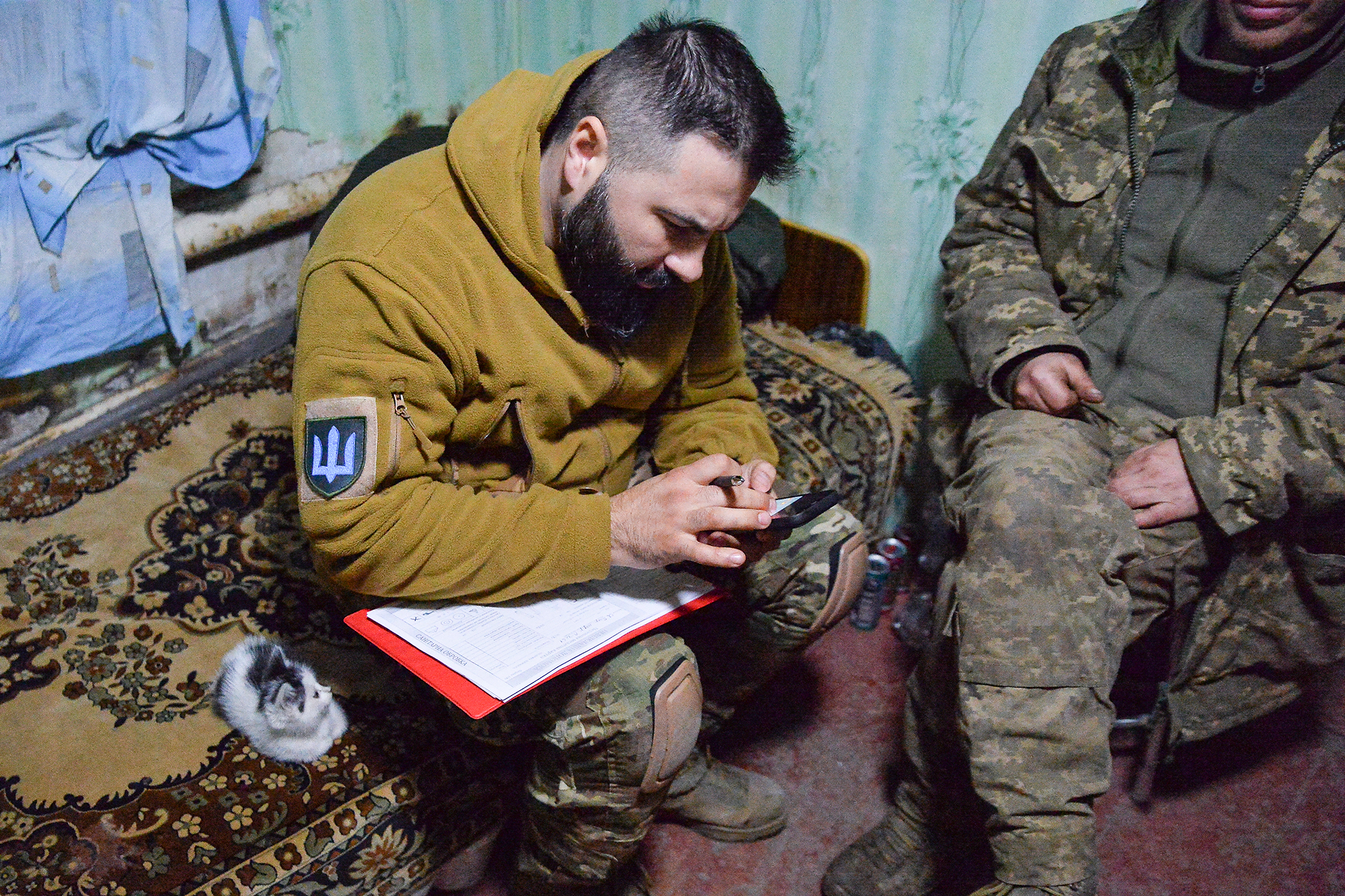
6 a.m. — “Malyuk” is one of the combat medics who lives here. He joined the military last March, soon after Russian soldiers occupied his home in Kherson. He told WhoWhatWhy that Russian forces later burned his home down. In this photo, Malyuk takes notes on a soldier’s injuries as the medics’ pet kitten, Ravioli, looks on. The blue patch on Malyuk’s right arm is the Ukrainian trident, a national symbol since 1918.
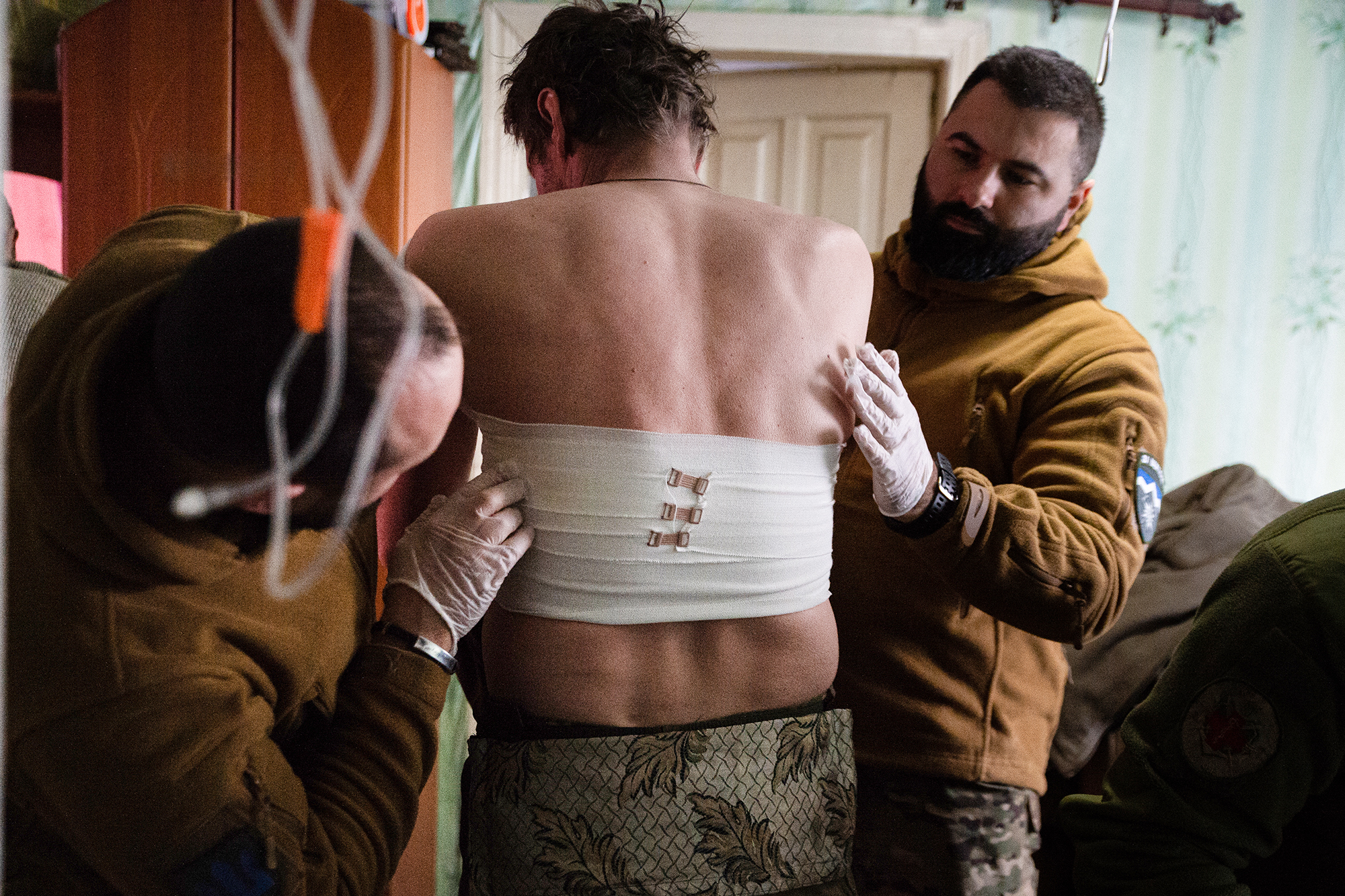
7:15 a.m. — “Capilan,” at center, is one of three infantrymen from the same brigade who were temporarily blinded by tear gas yesterday and then attacked by explosive grenades from Russian drones. The three soldiers hid in their underground trench while the drones circled overhead, waiting for them to reappear. The soldiers had to stay underground for the next 12 hours.
Capilan has shrapnel wounds on his torso, which his buddies had bandaged up while they were hiding in the trench. In this photo, combat medics Malyuk, right, and Sweety, left, are checking to make sure his wrap is secure.

7:30 a.m. — All five soldiers who arrived at the stabilization point earlier this morning have been treated by the combat medics and are ready for evacuation to the military hospital. In this photo, Capilan, center, and his buddies “Bubvlic,” left, and “Metrovic,” right, take a cigarette break before they depart.

Some Ukrainian soldiers evacuated from the frontline are not as fortunate as Metrovic, Capilan, Mechanic, Bubvlic, or Kush. Outside this house near Siversk sits a small shelter, a very temporary repository for soldiers who died on the battlefield. They will go home to their families and their final resting place as soon as a combat medic is available to take them.
